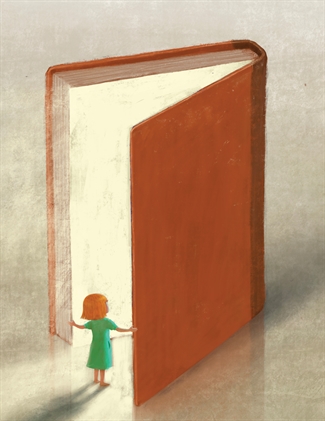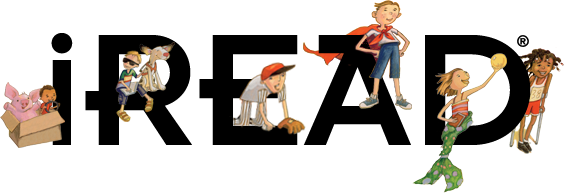June 2025 | Volume XLIII, Issue 2 »
Representation in Children's Books: Unlocking the World for Young Readers
June 2, 2025
Jawuan Walters, ILA Intellectual Freedom Committee
Recent research suggests that representation in children’s literature is about more than inclusion—it’s about fostering literacy and empathy. When young readers see themselves reflected in books, their engagement increases, along with their ability to read, comprehend, and analyze. Yet, in a time of censorship, rising book bans, and heightened political tensions, ensuring access to diverse stories has become an uphill battle.

WHY SEEING YOURSELF IN STORIES MATTERS
Imagine being a child searching for your reflection in the pages of a book. What does it feel like if, time and time again, you can’t find it? Representation in literature isn’t just comforting—it’s transformative. As Mikkaka Overstreet of Education Northwest explains, books that resonate culturally with readers validate their identities and keep them coming back for similar titles.¹
Studies support this claim. According to Literacy Minnesota, when children engage with books reflecting their cultural experiences, they enhance their reading comprehension and critical thinking skills.² Beyond identifying with a character, these stories equip them with essential tools to navigate the world, serving as both a mirror and a guide to what’s possible.
But representation isn’t only about the individual child. The Hachette Book Group highlights how diverse stories serve as windows into others’ lives, helping to cultivate empathy and cross-cultural understanding.³ Books, then, aren’t just for personal growth—they’re bridges connecting communities.
WHEN REPRESENTATION IS ERASED
Despite the overwhelming benefits, some stories never reach young readers. Recent surges in book bans have disproportionately targeted works representing marginalized communities. The consequences are far-reaching. For example, in March 2024, Millburn School District 24 in Illinois initially voted to discontinue their participation in the Rebecca Caudill Young Readers’ Book Award program, citing concerns over perceived political bias in the book selections. This decision faced significant pushback from students, parents, and educators, leading the board to reverse their decision and reinstate the program in the following month.⁴ The EdTrust blog warns that erasing these books perpetuates a cycle of invisibility, where already underrepresented voices are further silenced.⁵
The harm extends beyond representation—it impacts literacy itself. A 2018 study published in Literacy Research and Instruction revealed that African American students who read culturally relevant texts demonstrated a 15% increase in reading comprehension scores and reported greater enjoyment of reading compared to peers who did not engage with such materials.⁶ When these materials are removed, children lose not only a reflection of themselves but also critical opportunities to grow academically.
Stories shape how children see the world, making shared experiences just as essential as the words on the page. As the research points out, diverse stories offer social and emotional lessons that help children understand the complexity of the world around them.⁷ Banning these books strips away opportunities to learn about difference and empathy—skills as vital as literacy itself.
LIBRARIES: WHERE THE FIGHT FOR REPRESENTATION LIVES
Libraries have long been more than just buildings filled with books—they’re community anchors. In today’s polarized climate, they’ve also become battlegrounds for intellectual freedom. With censorship on the rise, librarians and collection managers have taken on the crucial task of curating collections that tell stories from all corners of life.
Consider storytime, a staple of public libraries nationwide. As the School Library Journal notes, these sessions, which include dancing, singing, and reading, have evolved into powerful tools for promoting literacy and inclusivity. When librarians incorporate diverse stories into their programming, they provide children with access to narratives they might not encounter anywhere else.⁸
The OCLC blog echoes this, calling for “supercharged storytimes” designed to captivate and educate young minds while normalizing diversity.⁹ These aren’t just passive readings—they’re opportunities to ignite curiosity, foster empathy, and build bridges across differences.
Beyond programming, collection management policies play a pivotal role in shaping the narratives available to readers. To ensure their shelves reflect the diversity of their communities, librarians are increasingly collaborating with authors, educators, and researchers. One such collaboration involves a tool developed by professors at Bates College called the Diverse Book-Finder Collection Analysis Tool.¹⁰ This online resource allows librarians to upload their picture-book ISBN lists and receive a detailed report highlighting racial and cultural gaps in their collections. With this data, library staff can make informed decisions to expand their holdings and intentionally include more Black, Latinx, Indigenous, Middle Eastern, and Asian stories—creating a more inclusive and representative literary experience for young readers. The Hachette Book Group emphasizes that amplifying underrepresented voices isn’t just a nice idea—it’s an essential strategy for creating equitable access to literature and boosting library usage.³
A CROSSROADS MOMENT
As book bans escalate, the stakes have never been higher. Representation in literature isn’t just an abstract ideal—it’s a necessity for literacy, empathy, and equity. Yet, the fight to protect access to diverse stories often feels like a race against time.
Initiatives like Education Northwest’s literacy programs—which include culturally responsive literacy training, educator workshops, and community-based reading interventions—showcase libraries as powerful catalysts for social change. These programs partner with libraries and schools to offer educators tools and strategies for selecting culturally relevant books, incorporating diverse narratives into classroom activities, and engaging children through stories reflective of their identities and communities.¹
For example, here in Illinois, initiatives like the Illinois Comprehensive Literacy Plan highlight how libraries and educational institutions can be powerful forces for social change. Developed by the Illinois State Board of Education, the plan offers professional learning modules that help educators strengthen their skills in evidence-based reading instruction.¹¹ By providing teachers and librarians with practical tools to incorporate culturally responsive materials and inclusive teaching practices, the initiative supports equitable literacy outcomes for students across the state.¹² Efforts like these reframe libraries as dynamic centers of empowerment—advancing literacy, fostering inclusion, and helping communities thrive.
These efforts remind us that libraries aren’t just about books—they’re about the future. They stand as symbols of what we value as a society: empathy, diversity, creativity, and the right to imagine a better world.
THE PATH FORWARD
The question isn’t whether representation in children’s literature matters. It does. The question is how to ensure every child has access to the stories they need to see themselves, understand others, and grow into the world’s next thinkers and dreamers.
Libraries, with their enduring commitment to access and equity, are uniquely positioned to lead this charge. By prioritizing diverse representation in their collections, resisting censorship, and embracing innovative programming, they can reaffirm their role as beacons of possibility. Additionally, advocacy groups like Unite Against Book Bans play a crucial role in raising awareness and mobilizing communities to stand against restrictions on literature.
It’s not just about one book or one shelf. This work has the potential of shaping a generation. The future of our libraries is the future of our children. And that’s a story worth fighting for.
WORKS CITED
1. Overstreet, Mikkaka. “Literacy Lens: A Love Letter to Libraries.” Education Northwest. April 2023. https://educationnorthwest.org/insights/literacy-lens-love-letter-libraries.
2. Tutor Tip. “Representation Matters: Diversity in Children’s Books.” Literacy Minnesota. October 2020. https://www.literacymn.org/representation-matters-diversity-in-childrens-books.
3. Hachette Book Group. “The Correlation Between Libraries and Literacy.” n.d. https://www.hachettebookgroup.com/articles/the-correlation-between-libraries-and-literacy.
4. Jensen, Kelly. “The Rebecca Caudill Awards Unbanned by Millburn School District in Suburban Chicago.” Book Riot. April 23, 2024. https://bookriot.com/the-rebecca-caudill-awards-unbanned-by-millburn-school-district-in-suburban-chicago/.
5. Rodick, William. “Rigor and Representation in Children’s Books Foster a Love of Reading.” EdTrust (blog). January 24, 2024. https://edtrust.org/blog/rigor-and-representation-in-childrens-books-foster-a-love-of-reading/.
6. Christ, Tanya, Ming Ming Chiu, Stephanie Rider, Deborah Kitson, Katherine Hanser, Elizabeth McConnell, Renae Dipzinski, and Heather Mayernik. “Cultural Relevance and Informal Reading Inventory Performance: African-American Primary and Middle School Students.” Literacy Research and Instruction 57 no. 2 (2018): 117–34.
7. Alberton Gunn, AnnMarie, Susan V. Bennett, Barbara J. Peterson. “Exploring Multicultureal Picturebooks With Social-Emotional Themes.” The Reading Teacher 76, no. 3 (2022): 362-374, https://doi.org/10.1002/trtr.2145.
8. Jacobsen, Linda. “Storytime: A Classic Library Service Boosts Literacy and More, Studies Show.” School Library Journal. July 3, 2017. https://www.slj.com/story/storytime-a-classic-library-service-boosts-literacy-and-more-studies-show.
9. Ghoting, Saroj. “Supercharge your storytimes to make a real impact on early childhood literacy.” OCLC (blog). January 3, 2019. https://blog.oclc.org/next/supercharge-your-storytimes-to-make-a-real-impact-on-childhood-literacy/.
10. Diverse BookFinder. “Collection Analysis Tool.” https://cat.diversebookfinder.org/.
11. Illinois State Board of Education. “Illinois Comprehensive Literacy Plan.” Effective January 2024. https://www.isbe.net/literacyplan.
12. Rogers, Chris “ISBE adopts Illinois Comprehensive Literacy Plan, developed through extensive statewide engagement.” ROE21. April 30, 2024. https://www.roe21.org/isbe-adopts-illinois-comprehensive-literacy-plan-developed-through-extensive-statewide-engagement/.

 iREAD Summer Reading Programs
iREAD Summer Reading Programs Latest Library JobLine Listings
Latest Library JobLine Listings